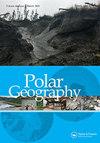The Arctic in tourism: complementing and contesting perspectives on tourism in the Arctic
IF 1.6
Q3 GEOGRAPHY, PHYSICAL
引用次数: 29
Abstract
ABSTRACT The economic and political importance of the Arctic has grown considerably in recent decades, and the region’s role and visibility in tourism has also significantly increased. The idea of Arctic tourism has been discussed in academia for a long time, but there is no consensus on the definition of the concept. This review paper aims to discuss different perspectives on tourism in the Arctic by utilizing literature and selected examples. The outlined perspectives are spatial, produced and experienced Arctic tourism. They are interrelated and, thus, partly complementary, but they can also challenge each other. The perspectives demonstrate different ways to approach and understand various characteristics of Arctic tourism and diversity in tourism in the Arctic. All perspectives of the Arctic in tourism involve both benefits and limitations when thinking about what Arctic tourism is and what it involves. The paper concludes that there is a need to acknowledge the diversity of the Arctic as a changing idea and a geographical region in and for tourism. By acknowledging this, the Arctic would not be characterized mainly by static or external views in tourism but also by internal needs, knowledge, dynamics and concerns for sustainable tourism development in the region.旅游中的北极:对北极旅游观点的补充和争论
近几十年来,北极的经济和政治重要性显著提高,该地区在旅游业中的作用和知名度也显著提高。北极旅游的概念在学术界已经讨论了很长时间,但对这一概念的定义却没有达成共识。这篇综述论文旨在通过利用文献和选定的例子来讨论北极旅游的不同观点。概述的观点是空间,生产和体验北极旅游。它们是相互关联的,因此在一定程度上是互补的,但它们也可以相互挑战。这些观点展示了不同的方式来接近和理解北极旅游的各种特征和北极旅游的多样性。在思考北极旅游是什么以及它涉及什么时,所有关于北极旅游的观点都涉及到好处和局限性。这篇论文的结论是,有必要承认北极的多样性是一个不断变化的概念,也是一个旅游的地理区域。认识到这一点,北极的特点将不再是旅游业的静态或外部观点,而是该地区可持续旅游业发展的内部需求、知识、动态和关切。
本文章由计算机程序翻译,如有差异,请以英文原文为准。
求助全文
约1分钟内获得全文
求助全文
来源期刊

Polar Geography
GEOGRAPHY, PHYSICAL-
CiteScore
5.30
自引率
0.00%
发文量
13
期刊介绍:
Polar Geographyis a quarterly publication that offers a venue for scholarly research on the physical and human aspects of the Polar Regions. The journal seeks to address the component interplay of the natural systems, the complex historical, political, economic, cultural, diplomatic, and security issues, and the interchange amongst them. As such, the journal welcomes comparative approaches, critical scholarship, and alternative and disparate perspectives from around the globe. The journal offers scientists a venue for publishing longer papers such as might result from distillation of a thesis, or review papers that place in global context results from coordinated national and international efforts currently underway in both Polar Regions.
 求助内容:
求助内容: 应助结果提醒方式:
应助结果提醒方式:


